Since I received my first watch as a kid, I always wondered which hand I should wear my watch on. Surprisingly, I’m not the only one stumped. I get asked this question so frequently that I decided to research for an answer.
So, which hand should I wear my watch on? You should wear your watch on your non-dominant hand. The non-dominant hand is the hand you don’t use to write. For practical reason, because there are fewer activities on your non-dominant hand, your watch is less likely to be damaged.
Bear in mind that there are no hard fast rules for this. I have friends who wear their watches on their dominant hand purely because they prefer to use their dominant hand to look at the time. In fact, that is not the only factor that you should look at when choosing which hand to wear your watch on.
Which Wrist Should You Wear Your Watch on? – 4 Simple Guidelines
Below are some of the factors that you should consider:
- Comfort
- Potential damage to your watch
- Ease to adjust your watch knob
- Gender expectations
1. Comfort
When I got my first watch as a kid, despite not knowing which hand to wear my watch on, I switched it between my left and right hand. It took me a while to judge which was more comfortable. It didn’t take me long to realize I was going to damage my new watch if I kept it on my dominant hand.
Being a right-handed guy, I now wear my watch on my left hand as it feels more comfortable. Moreover, the watch does not get in the way of my daily activities. I can’t tell you how many times that watch got in my way on the right hand. Even with mundane tasks such as writing and even closing my car door.
With the watch on my left, the problem sorted itself out.
2. Damage
Many people get used to their watches being on their dominant hand, but it still opens them up for damage. When you actively use one hand more than the other, it makes sense that you’re opening yourself up for injuries and to damage anything on that side.
I mentioned the car door earlier. . . I wasn’t kidding. I actually smashed my watch in the car door when it was on my dominant hand. It resulted in a deep scratch in the face of my watch and a big repair bill. It was the last time I ever wore my watch on my dominant hand.
3. Ease to adjust your watch knob
Generally, watches knobs are located on the right side of the watch. This is because most people are right-handed, meaning the watch will likely be on the left hand. The knob is easier to reach with your right. This photo shows how I am able to adjust my watch knob easily with my right hand when I am wearing the watch on my left hand.
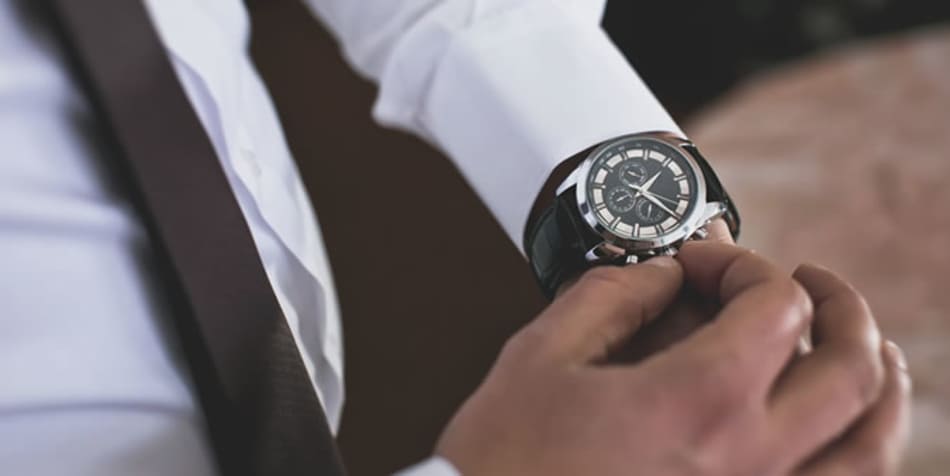
Wearing your watch on your right hand will not make it easy for you to adjust the watch knob with your left hand. It’s possible but difficult.
If your watch is not running on a battery, you’ll need to adjust that knob quite often. This is where convenience really comes into play. Battery-operated watches still have knobs or buttons, but they don’t need quite as much attention.
4. Gender expectations
Back in my grandfather’s time, when quartz watches were relatively popular and made available to everyone at cheap prices, people started to set standards to which hand they should wear their watch based on gender. I’m not sure why it was important, but that’s not the point of this article.
For some reason, it was decided that men wore theirs on the right side and women wore theirs on the left. Obviously, over time people realized that this was silly. It was more important that they wear their watch on whichever hand was more comfortable.
How Far Up Your Wrist Should You Wear a Watch?
The most comfortable spot to wear your watch is about ½ to 1 inch above your wrist bone. This does not restrict the movement of your wrist and it allows your watch to be worn slightly loose. Below is a photo to illustrate.

Generally, you want to feel comfortable with the watch on your wrist. In my opinion, there is no best position as there are several factors involved – The best way to determine your comfortable position is to wear your watch and continue with your daily activities to test if adjustment is required.
Are Watches Supposed to be Loose?
A watch should be somewhat loose on your wrist, but not to the extent where it is able to slide over your wrist bone. Being able to fit your last finger through the strap when your watch is worn is a good indicator that you are wearing your watch just right.

So, is it better to wear a watch loose or tight? Wearing a watch should feel comfortable on your hand. A watch shouldn’t be worn so tightly that it leaves an imprint on your skin and shouldn’t be worn too loosely that it is able to slide across your wrist bone.
What Size Watch Should I Get For My Wrist?
Here is a size guide to help you find the perfect watch size:
| Watch Size (Diameter) | Wrist Size (Circumference) |
| 46 mm | 8 inch |
| 44 mm | 7.5 inch |
| 42mm | 7 inch |
| 40 mm | 6.5 inch |
| 38 mm | 6 inch |
| 36 mm | 5.5 inch |
| 34 mm | 5 inch and below |
To measure the circumference of your wrist, you’ll need a measuring tape. Wrap the tape around your wrist about 1 inch below your wrist bone.

The thickness of the case also matters, wearing a watch with a thick case when you have a small wrist looks odd most of the time. Here is an example of a big 44 mm diameter watch with 10 mm case thickness on a 6-inch wrist.
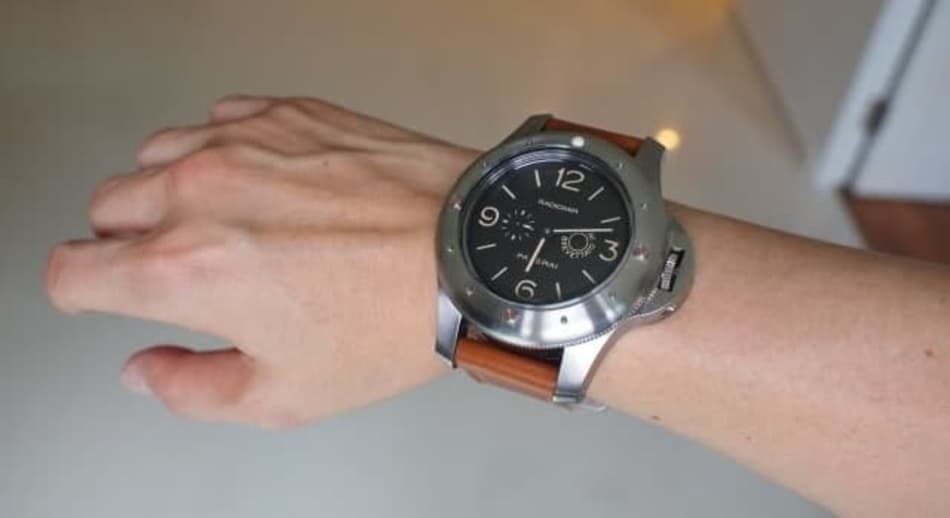
The table below will help you to choose a correct watch case thickness for your wrist size, this will be proportionally aligned so that the watch will look good on your hand.
| Watch Case Thickness (Height) | Wrist Size (Circumference) |
| 10 mm | 8 inch |
| 10 mm | 7.5 inch |
| 8-10 mm | 7 inch |
| 8 mm | 6.5 inch |
| 8 mm | 6 inch |
| 6 mm | 5.5 inch |
| 6 mm | 5 inch and below |
Even though there are thicker watch cases that can go up to 15 mm, I usually do not advise people to get them. To me, they look strange, but your opinion is what really matters. Maybe you like big watches!
What Type Of Watch Band is Best For My Wrist?
There is no rule when it comes to watch bands. This is a purely individual preference. Even so, we can look at some points about watch bands to help you decide.
There are 3 different types of watch bands
- Metal
- Leather
- Fabric
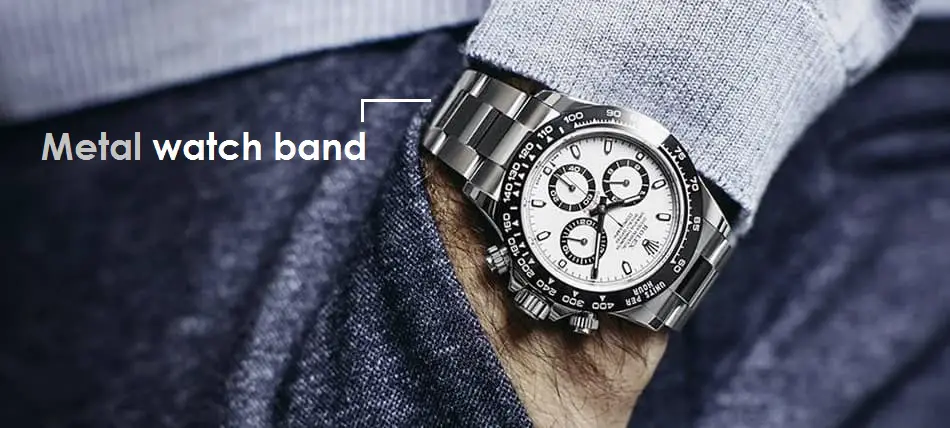
The metal watch band gives the impression of size. This is due to its heavy and shiny look. A metal watch band is a dominant material, giving others the impression of a more serious and formal feel.
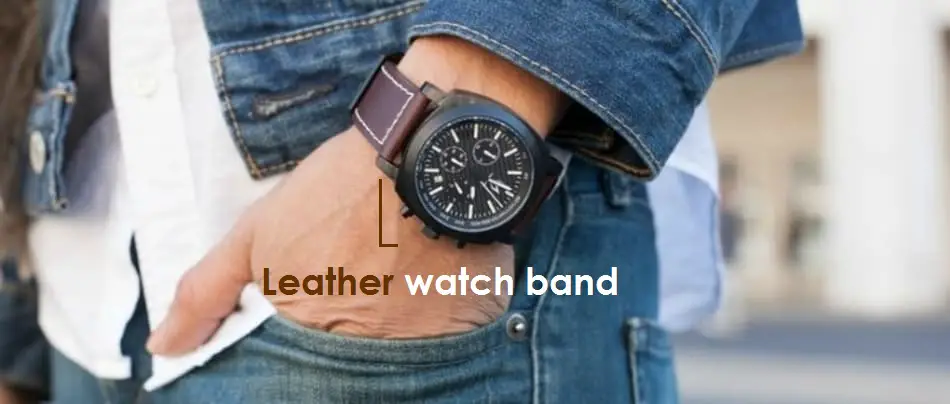
The leather watch band comes off in a more casual way. It helps to make your watch look slimmer and smaller. In my opinion, a seasoned leather watch band feels the most comfortable. Seasoned leather watch bands happen over time. They are created when you wear your leather band regularly and it eventually takes the shape of your wrist.
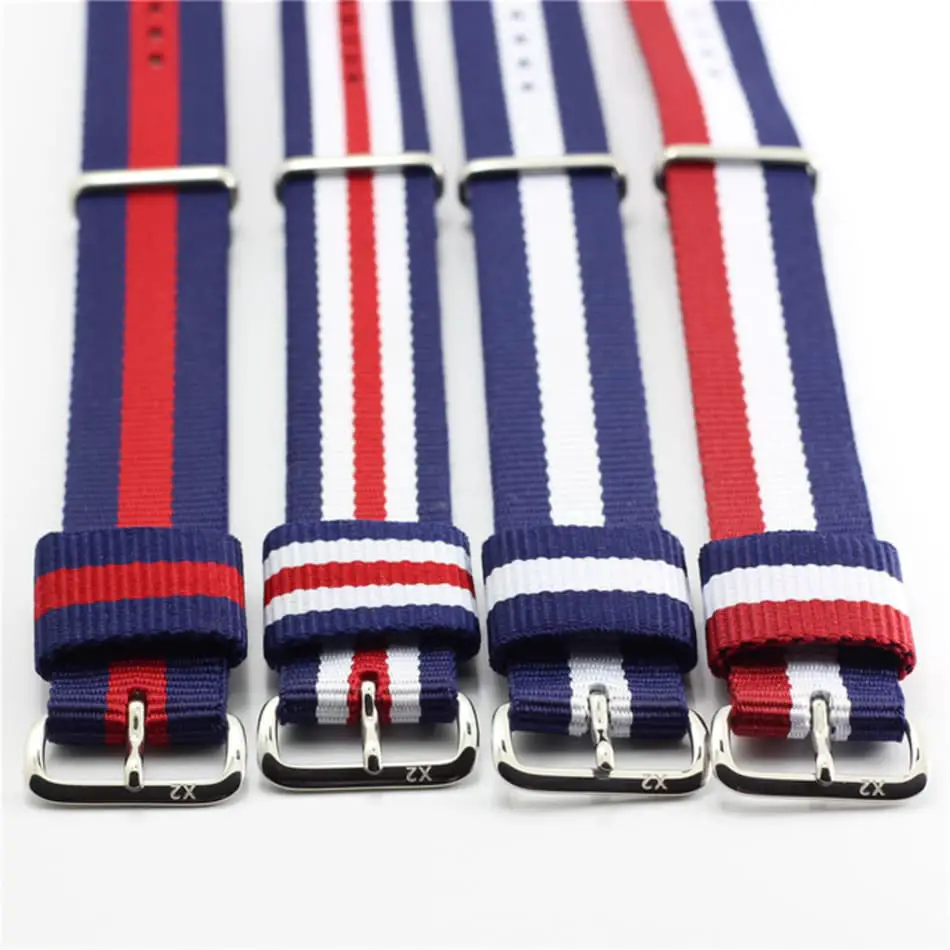
The fabric watch band is popular choices among the younger generation. It was driven by theDaniel Wellington brand when it first launched its fabric series of watch bands. One word to describe the fabric watch band is ‘fun’. People usually wear it for casual occasions to match their outfit. However, I don’t really enjoy wearing the fabric watch band under sweaty conditions; it makes the watch band sticky and sometimes smells gross.